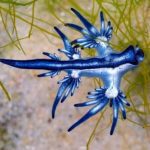 Technology
Technology  Technology
Technology  Humans
Humans 10 Everyday Human Behaviors That Are Actually Survival Instincts
 Animals
Animals 10 Animals That Humiliated and Harmed Historical Leaders
 History
History 10 Most Influential Protests in Modern History
 Creepy
Creepy 10 More Representations of Death from Myth, Legend, and Folktale
 Technology
Technology 10 Scientific Breakthroughs of 2025 That’ll Change Everything
 Our World
Our World 10 Ways Icelandic Culture Makes Other Countries Look Boring
 Misconceptions
Misconceptions 10 Common Misconceptions About the Victorian Era
 Mysteries
Mysteries 10 Strange Unexplained Mysteries of 2025
 Miscellaneous
Miscellaneous 10 of History’s Most Bell-Ringing Finishing Moves
 Technology
Technology Top 10 Everyday Tech Buzzwords That Hide a Darker Past
 Humans
Humans 10 Everyday Human Behaviors That Are Actually Survival Instincts
 Animals
Animals 10 Animals That Humiliated and Harmed Historical Leaders
Who's Behind Listverse?

Jamie Frater
Head Editor
Jamie founded Listverse due to an insatiable desire to share fascinating, obscure, and bizarre facts. He has been a guest speaker on numerous national radio and television stations and is a five time published author.
More About Us History
History 10 Most Influential Protests in Modern History
 Creepy
Creepy 10 More Representations of Death from Myth, Legend, and Folktale
 Technology
Technology 10 Scientific Breakthroughs of 2025 That’ll Change Everything
 Our World
Our World 10 Ways Icelandic Culture Makes Other Countries Look Boring
 Misconceptions
Misconceptions 10 Common Misconceptions About the Victorian Era
 Mysteries
Mysteries 10 Strange Unexplained Mysteries of 2025
 Miscellaneous
Miscellaneous 10 of History’s Most Bell-Ringing Finishing Moves
10 Strange Animals You Won’t Believe Actually Exist
What’s your favorite animal? If you’re anything like us, you’ll say something basic—the giraffe, the elephant, the wolf, the lion, maybe even the camel or the killer whale if you’re feeling something a little less popular is due. If you’re a bit of a strange person, perhaps you’ll pick something slightly further off the beaten path, like the okapi, or the hammerhead shark. But what about a truly strange animal? Would you ever choose the hairy frog as your favorite fauna? How about the enigma moth? Or maybe the sea cucumber?
If you’ve never heard of those animals before, don’t despair. That’s what this list is for! Today, we’ll be taking a long look at ten of the strangest animal species that currently exist on Earth. These ten animals are a little weird, a little nightmarish, and every bit unique and memorable. So, scroll down for one of the strangest lists of creeps and crawlers you can imagine. And remember what you read here, too, because the next time somebody asks you to name your favorite animal, you’ll need a memorable answer!
Related: 10 Weird Critters That Lived Alongside the Dinosaurs
10 Hairy Frog
A tiny frog in the western part of sub-Saharan Africa breaks its bones every time it gets in a fight with another animal. It’s called the hairy frog, and it is indeed hairy, too—or at least it looks hairy. But the story here is that it can break its bones and contract its leg muscles to connect to its hind claws. In doing so, it can thrust the shards of its broken bones through the bottom of its toe pads. And voila! It’s got a set of knife-like weapons with which it can fight against predators and other foes.
The coolest (and strangest) part of this is that when it’s done fighting, it can then make its broken bones retreat back into its feet. There, the bones are repaired because the tissue around them quickly regenerates. The hairy frog then goes about its business like nothing ever happened. Until, you know, the next time it gets in a fight and needs to re-break its bones to weaponize itself once again. What a crazy evolutionary development![1]
9 European Roller Bird
The European roller bird travels along an incredible distance during its life. It is known to migrate from Europe all the way to central Asia, the western coasts of India, and even sub-Saharan Africa, depending on its migratory patterns and the weather. And along the way, it vomits. On everything. No, really—the European roller bird is not only known for its incredible beauty and amazing migratory paths but also for the fact that it loves to throw up whenever it views a predator coming its way.
See, during their migratory marathon, European roller birds encounter all kinds of snakes, rats, and other little critters that want to eat them. Over the years, it developed an interesting evolutionary response to those attempts to eat it: vomit. Whenever it encounters a predator in the wild, the bird will vomit up a disgusting orange intestinal fluid. The bile smells like crap, looks awful, and horrifies predators to the point that they are content to slither away without their meal. It’s gross, but it works. Ultimately, it keeps the bad guys away long enough for the European roller bird to carry on with its incredible migratory journey.[2]
8 Xenomorph Wasp
Australian researchers only just discovered one of the most impressive and terrifying wasps to ever live. They call it the xenomorph wasp, and that name is no accident. This wasp survives, thrives, and carries on its next generations by injecting its eggs into a poor, unsuspecting caterpillar. Then, as the eggs grow and develop, they begin to literally consume the caterpillar from the inside out. Eventually, they grow so large that they burst out of the caterpillar’s body as fully formed larvae, ready to restart the cycle with another new caterpillar victim.
Oh, and things don’t always end there, either. Sometimes, the caterpillar manages to survive the larvae hatching… sort of. In those cases, the caterpillar will function as a zombified “house” of sorts for the wasp larvae, with its body and insides protecting the little wasps-to-be. That lasts until the day the larvae emerge from their caterpillar cocoon as wasps and go off into the world to wreak havoc on the next unsuspecting caterpillar. Ah, the cycle of life. It’s beautiful, isn’t it? (Don’t answer that.)[3]
7 Zombie-Ant Fungus
There is a Brazilian species of fungus that we need to talk about next. Okay, we get it; this is a fungus and not technically an animal like everything else on this list. But it does something so evil and cool that it’s worth talking about right now. See, this so-called “zombie ant fungus” got its name because it has the ability to burrow into an ant’s head and completely take over the poor little critter’s body.
First discovered by scientists only a few years ago, this fungus lies in wait until it’s in the right spot to jump onto an ant’s body. The unsuspecting ant then carries the fungus for a while until it makes its way up into the tiny little creature’s brain. From there, it literally zombifies the ant. It takes control of the ant’s neurological functions and feasts on its brain until the insect is so overcome with pain that it blacks out and dies. And then, just like a true zombie, the fungus moves on and prepares to infect the next ant in a long line of victims. Cool… but creepy. Very, very creepy.[4]
6 Nosy Hara Leaf Chameleon
The Nosy Hara leaf chameleon is found on a tiny islet called Antsiranana in Madagascar. But it’s not just that the chameleon only lives in one very small and specific place in the entire world that makes it unique; no, it’s that the chameleon himself is very small! The Nosy Hara leaf chameleon is so small that he can actually stand comfortably on the head of a match. Google this chameleon, and you’ll see plenty of pictures of him completely dwarfed by a person’s fingertip. That’s how small he is! Cool, right?
Well, yes. It’s definitely very cool that he is the smallest known chameleon species to exist anywhere on Earth. And it’s equally cool that scientists and researchers only first became aware of his existence in the last few years. He was so small and hard to find that nobody knew he was a thing until just a couple years back. But that also brings us to a troubling point here: the poor little guy’s habitat is being completely wiped out. Deforestation is wreaking havoc on this small chameleon, and scientists are terrified that he won’t be around much longer.[5]
5 Enigma Moth
The so-called enigma moth is another species that was just recently discovered. Scientists have had trouble tracking down this species for years, and you’ll understand why when we tell you about its most unique trait: it only lives for about 24 hours. That’s right! An enigma moth is born, emerges from its cocoon, finds a mate, reproduces, and then dies within one day. No wonder scientists had so much trouble tracking it down; they had to catch the damn thing on the only day of its life and then study it closely enough to figure out its wildly short and fascinating existence!
Of course, to an enigma moth, it doesn’t just live for “a day.” That day is its entire known world! So, it had better make the most of it, right? Birthing, eating, mating… sounds like a full day, indeed. This begs the question that we so often hear from people: If you only had one day to live, how would you spend it? Well, if you’re an enigma moth, you now have the answer to that question.[6]
4 Fanged Frog
Let’s continue our list of creatures that have just recently been discovered with a story about the fanged frog. Scientists first found out that this frog existed in remote islands along the Philippines back in 2014. But even though the fanged frog has only been a known entity for about a decade now, we’ve learned a surprising amount about him. And what we do know has us both on the edge of our seats with fascination and, if we’re being honest, a little bit terrified about what’s going on out there in the island chain!
See, the fanged frog (or Limnonectes larvaepartus, if you wish to use his scientific name to be polite and proper) has two unique projections on its lower jaw that aren’t seen in other frogs. That’s why he’s called the fanged frog, after all. It uses those fangs to fight off other predators. Think of it like a wolf or a lion, but… you know, still as a frog. Oh, and as if that weren’t cool enough, female fanged frogs actually give birth to live tadpoles, too. And then, when predators come around to try to eat ’em up, these new mommas will fiercely fight them off with their fangs. It makes for quite an evolutionary defense mechanism![7]
3 Elephant Shrew
Don’t be fooled by the name of the elephant shrew—or by the look of the little guy. He may appear like an everyday, regular ol’ mouse… albeit one with a cute little snout. But though he may be small, he is actually pretty fierce. And he has the big-time DNA to back it up! See, the elephant shrew’s name is only half a misnomer. And it’s the half you aren’t expecting. He’s not quite as closely related to a shrew or any other rodent; instead, he’s actually very closely related to the elephant!
Yes, really. That little guy may only grow to be a few inches tall, and he might scurry around on the depths of the desert floor for his entire life. But when it comes to his actual DNA and the genetic disposition housed within him, his makeup is very much like that of the elephant. Maybe it’s ironic, cute, or straight-up strange, but regardless, it’s true: One of nature’s smallest mammals is extremely closely related to one of nature’s largest ones. Oh, biology, why must you confuse us so badly?![8]
2 Bombardier Beetle
The bombardier beetle is named as such because that’s literally what it does when it is faced with an attacker: It bombs them. Literally. With a spray of chemicals so hot that it could actually burn your skin if you ever came across this little guy!
So the bombardier beetle may look small and unassuming. After all, he’s only about a half-inch in diameter. But he’s got two separate glands on his body that are absolutely deadly for predators. One contains a mix of hydrogen peroxide and hydroquinone—which, when combined, work together as a skin-bleaching agent. The other gland contains a mixture of enzymes unique to the beetle.
When the chemicals in the two glands are mixed, they create a chemical that can get as hot as 212 degrees Fahrenheit. But that alone isn’t the story here. The real creepy tale is that the bombardier beetle also has a little nozzle-ish opening located on his abdomen. From there, he can shoot the potent hot mixture of the two glands at a predator when facing mortal danger. He’s not a one-pump chump, either; this beetle can shoot his deadly mixture as many as 20 times in succession. Better run if you see him flying around![9]
1 Sea Cucumber
You would think that the sea cucumber would be easy prey specifically because of how long it takes to, you know, go anywhere. But the sea cucumber has a fascinating adaptation that gives it a fighting chance against crabs and other would-be predators: it shoots its guts! No, but like, seriously. When threatened by a crab or anything else, the sea cucumber can fire out its intestines and respiratory tracts at the would-be assassin. Sometimes, they even shoot out their reproductive organs! But… why? Well, as a diversion, of course!
See, after the sea cucumber has shot out its guts, it retreats under a rock. The predator is so enamored with the meal it received so easily that it forgets about eating the rest of the sea cucumber. It simply chows down on the left-behind guts and entrails and then goes about its day. Meanwhile, the sea cucumber bides its time under that rock for the next few months, slowly but surely growing back its organs until it is again at full strength. Seriously. Sometimes, science is weirder than science fiction.[10]
+ BONUS: Bilby
Without a doubt, the bilby is definitely the cutest animal on this list. (Don’t tell the elephant shrew that we said that.) If you’ve never heard of the bilby before, you’re not alone. He’s a rabbit-like mammal that only lives in Australia. And he’s only active at night, so people besides scientists and wildlife biologists hardly ever see him in action. Sadly, he’s been hunted and his habitat has been pretty much destroyed, so he’s now only native to a very small part of the arid deserts of northwestern and central Australia. In fact, his cousin, the lesser bilby, went totally extinct back in the 1950s. So sad.
But enough depression—let’s talk cuteness and craziness! The bilby typically lives for about six years in captivity, but out in the wild, it’s more common for him to live for just a couple years. And because he’s got a limited amount of time on this earth, he spends much of it procreating. Female bilbies become reproductively fertile at about six months of age and immediately start breeding. They tend to breed all year round, too. And they have a very short gestation period—just 12 to 14 days! So they can pop out a new baby bilby every two weeks or so. (Yes, in case you are wondering, that is one of the shortest gestation periods of any mammal on Earth.)
And when those momma bilbies give birth, their youngsters immediately become some of the tiniest mammals on earth. They measure only a quarter of an inch long at birth, and they are so underdeveloped that they have to immediately crawl into their marsupial momma’s pouch and pray they can keep growing there. After another two months, they can finally leave the pouch and move into a burrow. Then, after another few weeks, they can become independent and live out their own lives. What a wild existence![11]








